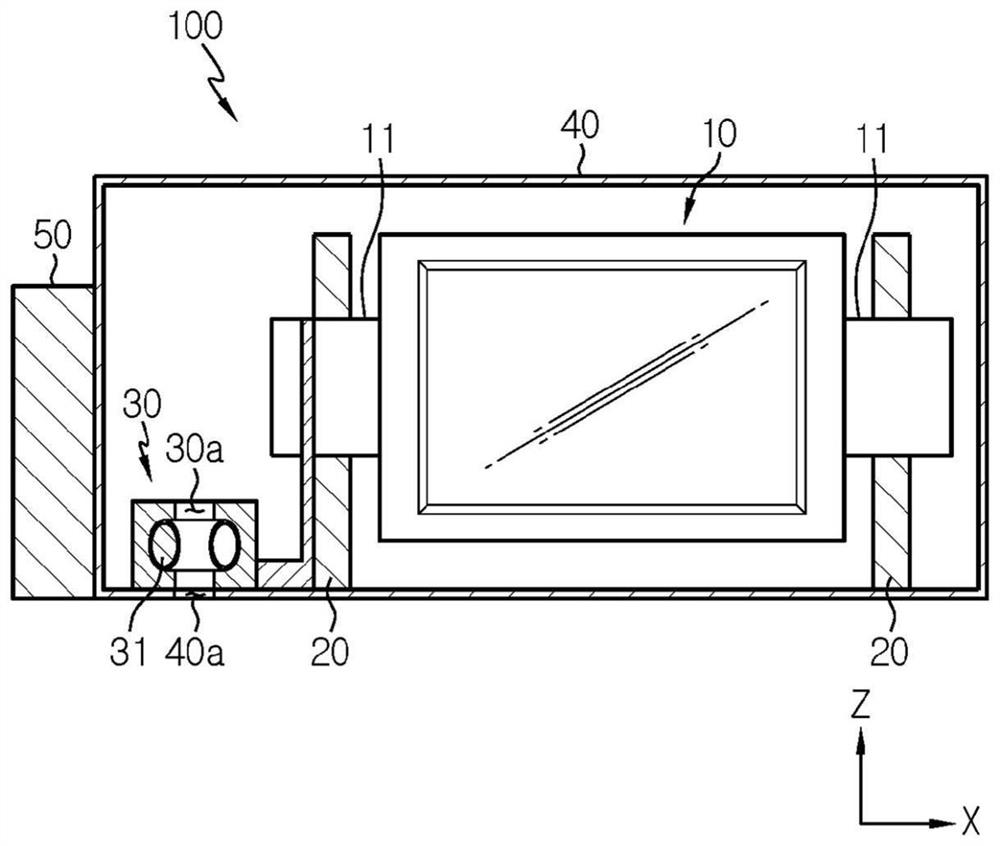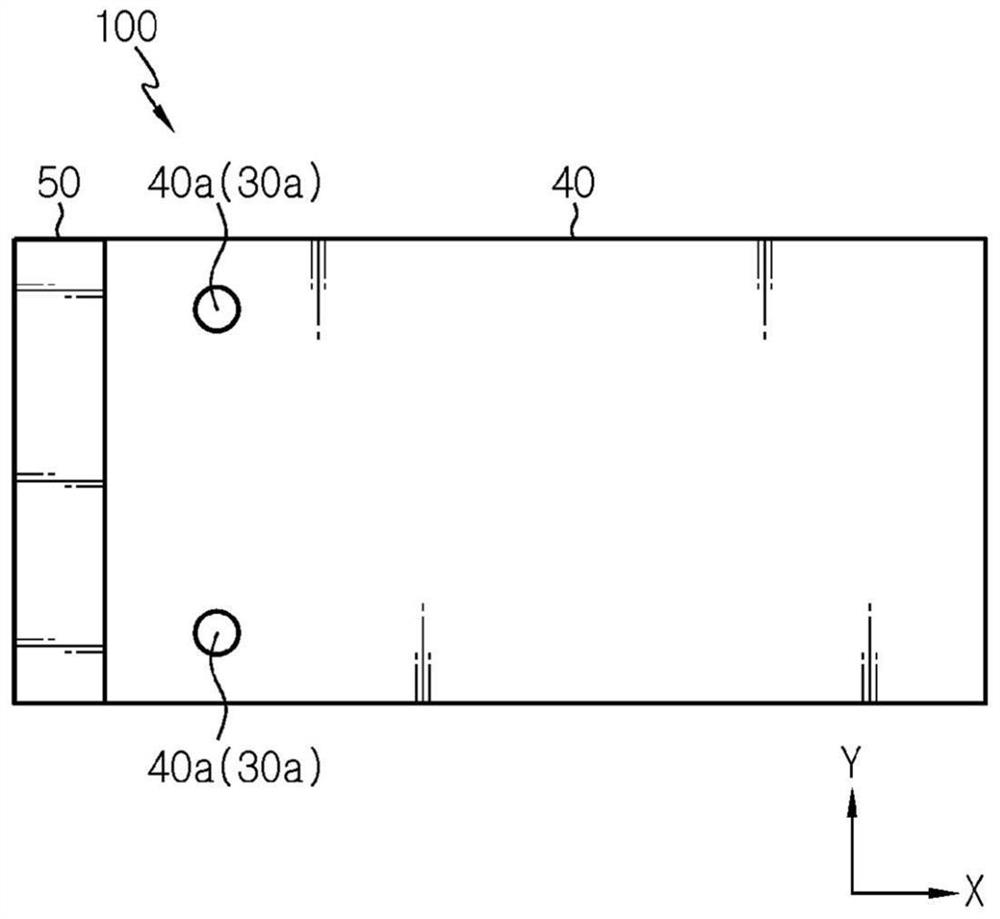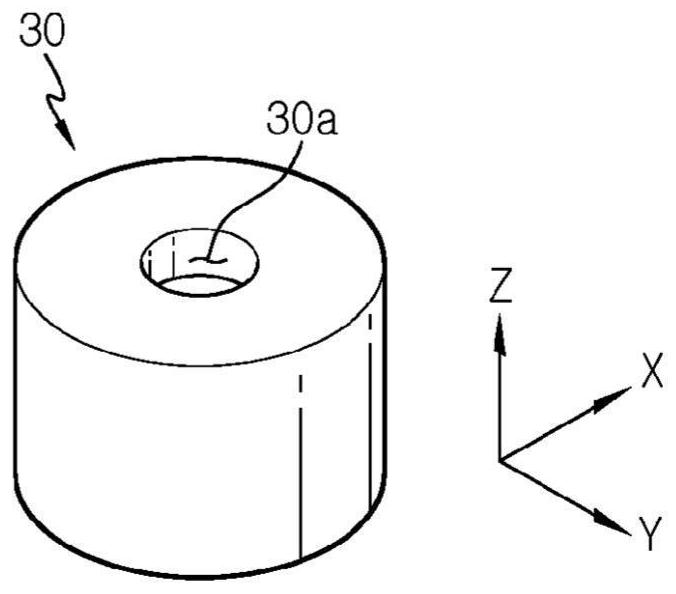Battery module having vent hole terminal, and battery pack and vehicle including same
A battery module and vent technology, which is applied to battery pack components, batteries, circuits, etc., to simplify the electrical connection process and prevent penetration.
- Summary
- Abstract
- Description
- Claims
- Application Information
AI Technical Summary
Problems solved by technology
Method used
Image
Examples
Embodiment Construction
[0035] Hereinafter, preferred embodiments of the present disclosure will be described in detail with reference to the accompanying drawings. Before the description, it is to be understood that the terms used in the specification and the appended claims should not be construed as limited to their ordinary and dictionary meanings, but should be construed based on the principle that the inventor is permitted to define the terms appropriately for the best interpretation. Meanings and concepts corresponding to technical aspects of the present disclosure. Accordingly, the descriptions presented herein are only preferred examples for illustrative purposes only and are not intended to limit the scope of the disclosure, it being understood that other equivalents may be made without departing from the scope of the disclosure and modification.
[0036] refer to Figure 1 to Figure 3 , the battery module 100 according to an embodiment of the present disclosure will be described.
[003...
PUM
 Login to View More
Login to View More Abstract
Description
Claims
Application Information
 Login to View More
Login to View More - R&D
- Intellectual Property
- Life Sciences
- Materials
- Tech Scout
- Unparalleled Data Quality
- Higher Quality Content
- 60% Fewer Hallucinations
Browse by: Latest US Patents, China's latest patents, Technical Efficacy Thesaurus, Application Domain, Technology Topic, Popular Technical Reports.
© 2025 PatSnap. All rights reserved.Legal|Privacy policy|Modern Slavery Act Transparency Statement|Sitemap|About US| Contact US: help@patsnap.com



